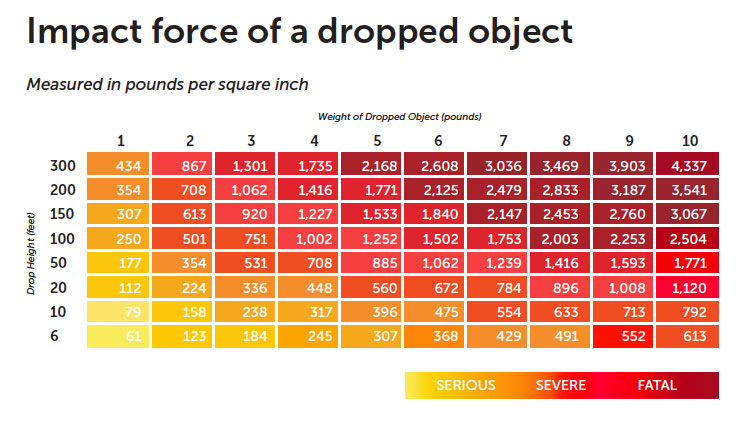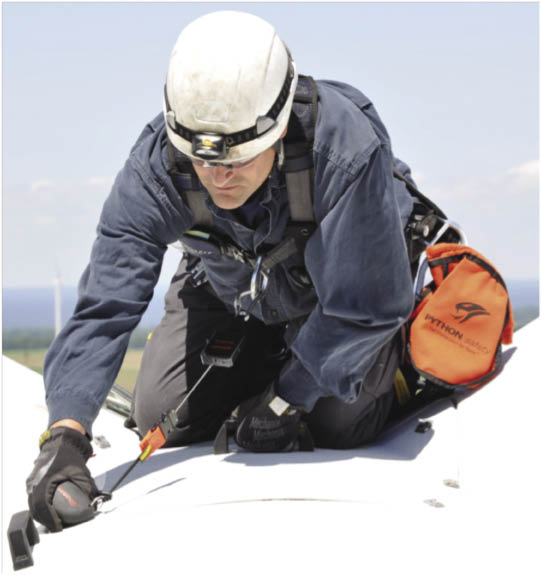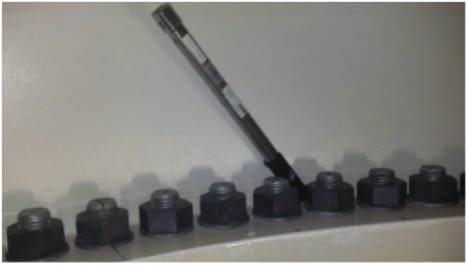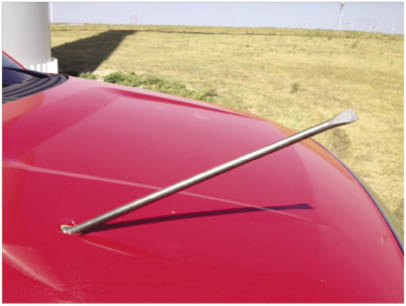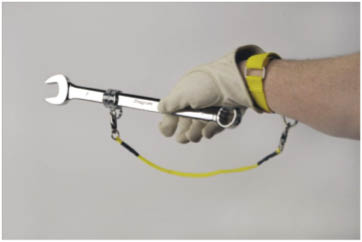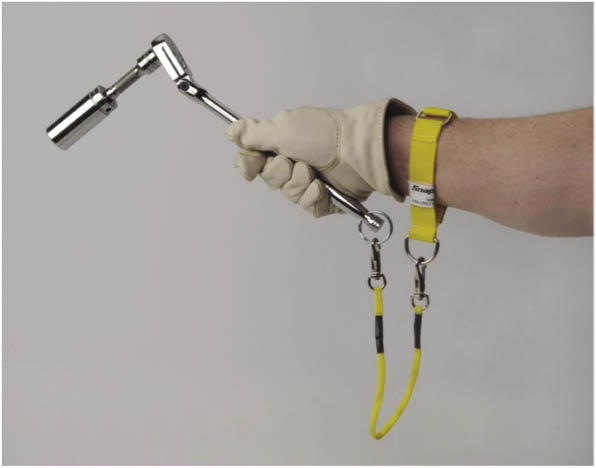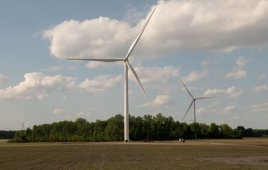Article by John Tremblay / Wind Energy Manager / Snap-on Industrial

Using lift bags of proper size and rated capacity, with secure top closures, can help prevent dropped tools.
Dropped objects are a leading cause of death and injury in the workplace, and the windpower industry is no exception. In May, a worker on a wind project construction site was struck and killed by a falling wrench. At Windpower 2013 in Chicago, OSHA identified drop prevention as a key area of focus. Clearly, a critical objective for the industry is to stop dropped objects.
Most anyone who’s worked on a wind construction site, or in a service group, has a story about a dropped tool. In 2012, one industry-leading company recorded nearly 100 such incidents. This begs the question: How many unrecorded drops occurred? Considering potential repercussions including unproductive time, Foreign Object Debris (FOD), tool damage, equipment damage, injury, and death, the significant value of a drop prevention program is clear.
Although awareness of the dropped object threat has existed for quite a while, accounts of near misses and injuries have become more prevalent. In another recent incident, a dropped socket struck a technician in the shoulder, breaking his collarbone. In attempts to address the problem, some companies have gone so far as to terminate employees responsible for a drop. With a trend toward greater accountability, it’s incumbent on employers to provide robust, user-friendly solutions.
Challenges
A number of leading OEM’s and owners have made reasonable attempts to establish drop prevention programs. Logic might tell us that if we can successfully implement fall protection policies and procedures, drop prevention should be relatively easy. The reality is that it’s far more difficult than it appears. Here are some reasons why:
Culture: Tool-drop prevention hasn’t attained the status of fall protection. It’s easy for most anyone to comprehend the dangers of falling from height. Consequences from dropped objects are less straight-forward and additional education at all levels is necessary. A 3-lb. tool falling from 200 feet strikes the earth with 1,062 lbs. of force per square inch. Hard hats and drop zones are of little consequence when an object carrying this kind of energy makes a direct impact or deflects and travels parallel to the ground.
Behavioral shift: Twenty-five years ago the thought of wearing a seat belt was absurd to many people. Now most of us buckle up as a matter of course. This change of behavior didn’t happen overnight. Implementing a tool-drop prevention program is a significant paradigm shift, challenged by a lack of awareness, resistance to change and a drive toward increased productivity.
Limited scope: Conventional wisdom has been that tool drop prevention is necessary only outside the nacelle. The opportunity for lost time, FOD, equipment and tool damage, and injury, are just as real inside the tower, nacelle, or hub. Whether it’s a multimeter dropped to the yaw deck, a socket falling inside a blade, or a 10-lb. wrench descending the length of the mid tower section, a full range of consequences are in play.
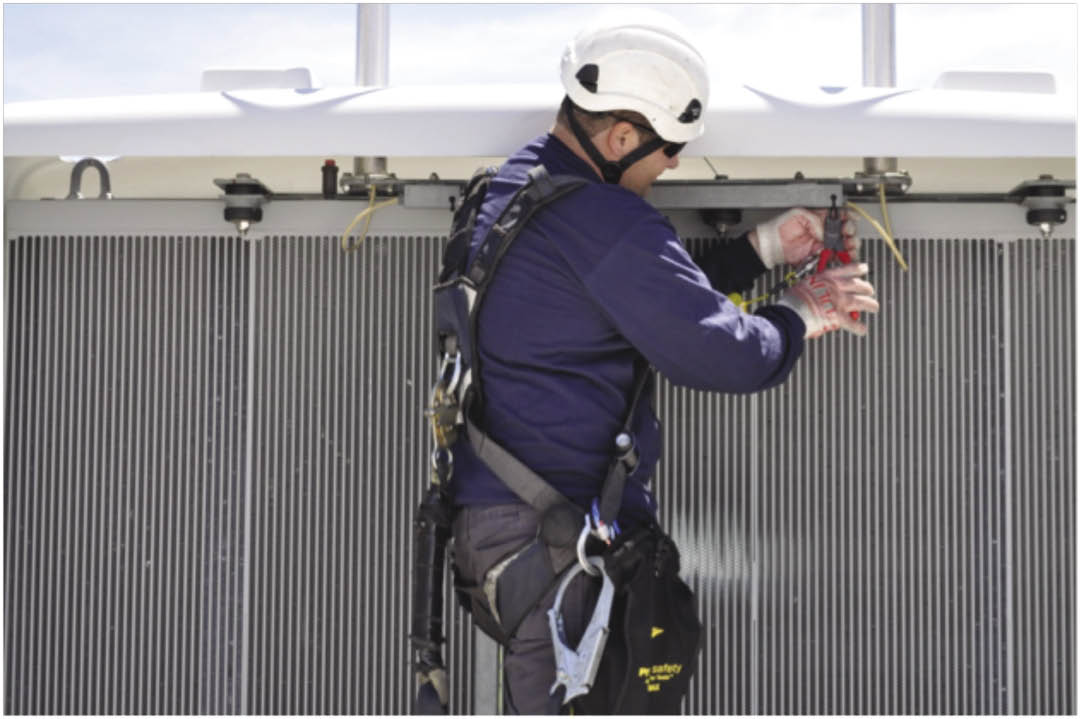
A wind technician uses a tethered cutting plier with an engineered attachment point located away from the gripping surfaces.
Independent solutions: When a company designs a climbing harness, the human body and its variations are thoroughly considered. Most people, though, have primarily the same structure (two arms, two legs and a torso). Tools have so many different shapes, features, and functions that the “one size fits all” concept of drop prevention attachments inhibits program implementation, acceptance, and sustainability. A robust program should include significant considerations for tool design, form, fit, and function, along with rigorous drop testing of attachment points prior to use in the field.
Limiting tool functionality: Many drop-prevention devices inhibit tool function and therefore affect job performance. If attachments are obstructive and impact productivity, workers may discard them. The windpower O&M working environment must be safe and productive, so user-friendly systems are required.
Complete programs: Successful implementation requires incorporating drop prevention planning into the tool specification and procurement process. Turn-key toolkits, in which each tool has a lanyard attachment point, provide a solid foundation for any program. Custom solutions can be developed for specific job functions.
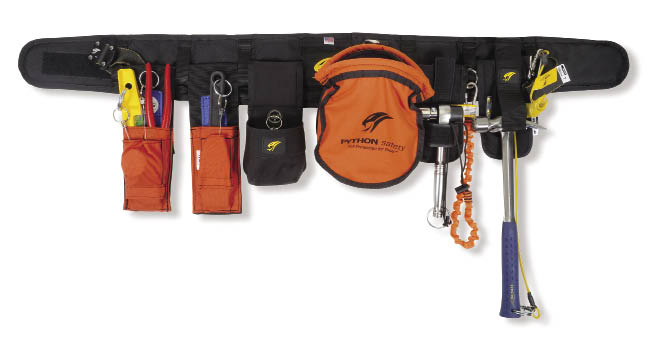
A turn-key tool belt was designed specifically for offshore oil and gas scaffold builders. Similar belts are being made for use in the wind industry.
A custom turn-key tool belt was designed specifically for offshore oil and gas scaffold builders. It comes as shown with each tool tethered and ready for safe use at height. Similar methodology and components are being used to develop solutions for windpower.
Tool drop case studies
Below are several incidents in which a tool was dropped, and how a similar event could be prevented in the future.
Incident description: GE 1.5 and Vestas V82 hub entry typically require a tool to release the hatch door. Accounts of drops associated with this operation are numerous. In one instance, a 14 mm Allen wrench falling from a GE nacelle penetrated and lodged in a blade.
Solution: In some cases, drop prevention systems can enhance a tool and make the job easier. A custom hub-hatch tool (shown above left) with pinned socket and palm driver, along with tether ring and retractable lanyard, make for a safe, ergonomic, turn-key solution.
Incident description: A torque wrench hanging from a carabiner by the ratchet head fell when the head release button was inadvertently depressed. The torque wrench body fell 80 feet, wedging itself between the flange and tower wall.
Solution: Quick release buttons are convenient but can also be a liability. When using torque wrenches with interchangeable head capability, a locking spring-pin system eliminates drops due to accidental release.
Incident description: While craning tools down-tower, a large chisel fell from a tool bag and lodged in the hood of a maintenance vehicle.
Solution: Use lift bags of proper size and rated capacity, with secure top closures.
Incident description: A large combination wrench fell, striking a power unit and then a technician. Fortunately, no serious injury occurred.
Solution: Specially engineered and drop-tested spring coils that move freely along the wrench allow full-length use and complete tool functional.
Incident description: A socket dropped from a nacelle slid down a turbine blade and then directly through the windshield of maintenance truck.
Solution: Use square drive tool systems with locking spring pins, side lock holes, and engineered attachment points.
Conclusion
Tool drop is a real safety and productivity concern in wind energy. Recognizing the issue is a great first step, and embracing the concept of a complete, reliable solution goes a long way toward establishing a sustainable safety program. As companies explore opportunities, tooling professionals can be a significant source of knowledge through sharing methods and successful systems developed for other markets. WPE
Filed Under: Uncategorized

